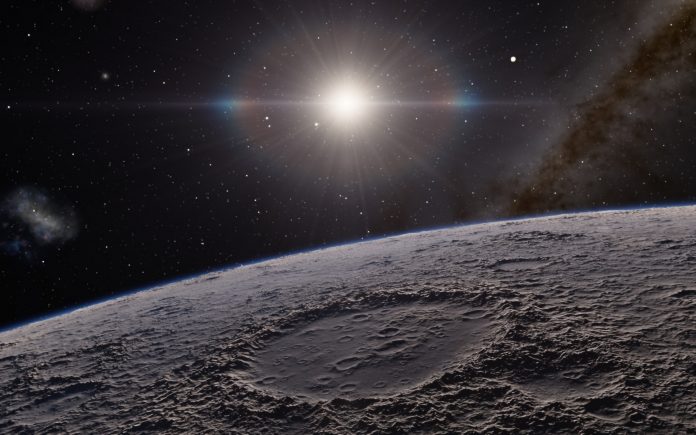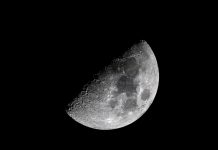Scientists have unveiled a crucial process in creating a distinctive rock type found on the Moon. This discovery highlights these lunar rocks’ signature composition and presence
The study, co-led by Professor Tim Elliott from the University of Bristol and Dr. Martijn Klaver from the University of Münster, solves a key step in the origin of these unique lunar magmas. Through a combination of high-temperature laboratory experiments using molten rocks and sophisticated isotopic analyses of lunar samples, researchers have identified a critical reaction that controls the composition of these rocks.
The reaction
The groundbreaking reaction occurred three and a half billion years ago in the deep lunar interior. It involved the exchange of the element iron (Fe) in the magma with the element magnesium (Mg) in the surrounding rocks, modifying the chemical and physical properties of the melt.
Professor Tim Elliott says, “The origin of volcanic lunar rocks is a fascinating tale involving an ‘avalanche’ of an unstable, planetary-scale crystal pile created by the cooling of a primordial magma ocean. Central to constraining this epic history is the presence of a magma type unique to the Moon, but explaining how such magmas could even have got to the surface, to be sampled by Space missions, has been a troublesome problem. It is great to have resolved this dilemma.”
“explaining how such magmas could even have got to the surface, to be sampled by Space missions, has been a troublesome problem”
High concentration of titanium
Since the NASA Apollo missions in the 1960s and 1970s, scientists have known about surprisingly high concentrations of titanium (Ti) in parts of the lunar surface.
Recent mapping by orbiting satellites has revealed that these magmas, known as ‘high-Ti basalts,’ are widespread on the Moon. However, until now, models have struggled to recreate magma compositions that match these rocks’ essential chemical and physical characteristics, particularly their low density, allowing them to erupt over three and a half billion years ago.
Dr. Martijn Klaver, co-lead author and Research Fellow at the University of Münster Institute of Mineralogy, states, “It has proven particularly hard to explain their low density, which allowed them to be erupted some three and a half billion years ago.”
High-temperature experiments
In a collaborative effort, an international team of scientists led by the Universities of Bristol and Münster mimicked the high-Ti basalts in laboratory settings using high-temperature experiments. The measurements of the high-Ti basalts also revealed a distinctive isotopic composition that serves as a fingerprint of the reactions reproduced by the experiments.
These groundbreaking results demonstrate how the melt-solid reaction is integral to understanding the formation of these unique lunar magmas. The successful recreation of these high-Ti basalts in the lab provides a significant leap forward in solving the long-standing puzzle of their origin and eruption on the Moon’s surface.
This breakthrough enhances our understanding of lunar geology and paves the way for further exploration and discovery of the Moon’s intriguing geological history. As scientists continue to unlock the secrets of our celestial neighbor, each revelation brings us one step closer to unraveling the mysteries of the cosmos.
Editor's Recommended Articles
-
Must Read >> Space exploration and the nature of the divine














